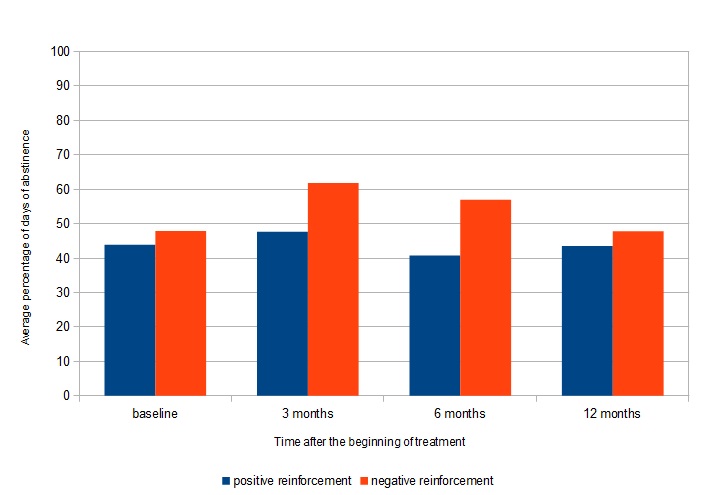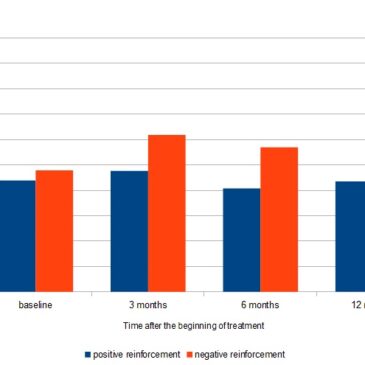Research suggests that adolescents often drink or use drugs for very distinct reasons. For example, some might use substances for “enhancement” (i.e., because they like it) and others might do so to escape depression or anxiety (Kuntsche et al., 2010). Understanding adolescents’ reasons for drinking is important to maximizing positive treatment outcomes. This week’s STASH looks at the association between reasons for alcohol or drug use (i.e., enhancement versus coping) and the effectiveness of skills-based group interventions (Dow and Kelly, 2013).
Methods
- The researchers recruited participants from a private substance use disorder treatment facility in the northeastern United States. They attempted to enroll 178 adolescents presenting for outpatient treatment. A total of 109 adolescents (82 males; 87.2% white, average age: 16.6 years) met the inclusion criteria and enrolled in the study.1
- Of these, 17 reported entering because of alcohol, 76 reported entering because of another substance, and 16 reported entering because of both alcohol and another substance.
- Participants were asked for the major reason for using. Based on the response, each participant was classified as using for enhancement reasons (e.g., “getting high/stoned for pleasure”) or as using for coping reasons (e.g., “peer pressure”, “family problems”).
- Participants were scheduled to complete a 12-week program that included cognitive behavior therapy, motivational enhancement therapy, and 12-step strategies.
- Participants completed an assessment close to their treatment start date (i.e., baseline), as well as follow-up assessments 3, 6, and 12 months after the beginning of treatment. During each assessment, participants reported what percentage of the previous 90 days they had remained abstinent from drugs and alcohol (percent days abstinent; PDA).
- Researchers examined how participants with enhancement versus coping reasons for drinking differed in their PDA at baseline and at 3, 6, and 12 months after the start of treatment.
Results
- About half (47%) of participants reported that they drank or used drugs for enhancement, and about half (53%) used substances to cope.
- As Figure 1 shows, at 3 months and 6 months, the average PDA for the coping group was significantly higher than the average for the enhancement group. At baseline and 12 months, the differences in the averages were negligible.

Figure. Average PDA at different time points among those who for use for enhancement and those who use for coping (adapted from Dow and Kelly, 2013). Click image to enlarge.
Limitations
- The participants came from a single treatment facility. The results may not be generalizable to other treatment experiences or the greater population.
- In the survey, the section on reasons for substance use was not open-ended. Participants responded to a list of potential reasons for using. This list may have influenced their responses and classification.
- The researchers did not assess how substance of choice (e.g., alcohol, marijuana) might have influenced the results.
- The researchers categorized participants into enhancement versus coping groups, but in reality some people might use substances both for enhancement and for coping.
Conclusion
In this study, adolescents attending a skills-based group intervention showed more positive outcomes if they used drugs or alcohol for coping reasons as compared to those who used for enhancement reasons. However, the difference in the effect dissipated within a year of the beginning of treatment. Still, this study illustrates that different people respond differently to treatment. Determining which differences are important to treatment efficacy is a first step towards developing more individualized, more targeted, and more effective treatments for substance use disorders.
– Matthew Tom
What do you think? Please use the comment link below to provide feedback on this article.
References
Dow, S. J., & Kelly, J. F. (2013). Listening to youth: Adolescents’ reasons for substance use as a unique predictor of treatment response and outcome. Psychology of Addictive Behaviors: Journal of the Society of Psychologists in Addictive Behaviors, 27(4), 1122–1131. doi:10.1037/a0031065
Kuntsche, E., Knibbe, R., Engels, R., & Gmel, G. (2010). Being Drunk to Have Fun or to Forget Problems?: Identifying Enhancement and Coping Drinkers Among Risky Drinking Adolescents. European Journal of Psychological Assessment, 26(1), 46–54. doi:10.1027/1015-5759/a000007
________________
[1] Eighteen adolescents were not considered eligible to participate, 8 did not agree to be contacted by study staff, and 25 did not enroll in the study. When researchers asked the remaining 127 adolescents to provide a reason for substance use, 18 gave either ambiguous responses or no response at all.





Sarah May 8, 2014
One of your limitations is “The researchers categorized participants into enhancement versus coping groups, but in reality some people might use substances both for enhancement and for coping.” The article reports that 10 participants reported both PR and NR status. Since this number was so small, meaningful analyses were not feasible, and these individuals were excluded from the analyses.
The BASIS Staff May 16, 2014
Thank you for the clarification. The BASIS writing staff appreciates readers who offer constructive comments.